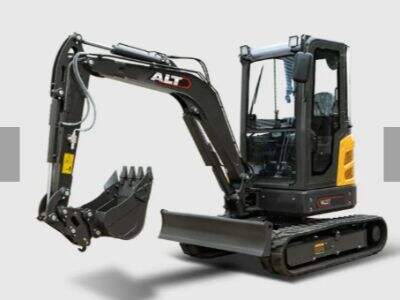Four-wheel forklifts are large machines that are needed to drive or elevate bulky loads. These machines are commonly seen in warehouses and factories. They are useful for workers to transfer goods and different materials from one place to another. The total power on work on these forklifts is of two types which is electric engines and gas engines. We will also shed some light about these engines based on which you can figure out which engine might suit your business the best.
Forklifts: Electric vs Gas Engines
These days, electric engines are gaining more popularity. Part of it is they are green friendly. It implies lesser pollution discharge into the air and is therefore a clean option. Electric forklifts can also operate quietly, which is a positive in workspaces with a lot of activity. These have batteries that can be charged when the forklift is not in use, either during the breaks or at the end of the day. Electric engines pollute less (and are therefore easier to maintain). They require less repair most of the time, which translates into savings for the business in the long run.
Gas engines, on the other hand, use a fuel such as propane or diesel. These are typically pretty stout engines. They can also carry heavier loads than electric engines, which are suitable for businesses that need to transport very heavy items. In addition, gas engines can be faster than electric engines, accelerating goods movement value. Gas engines may be pricier up front but will last longer and better under demanding conditions, making them a solid long-term investment.
Warehouse Equipment: The Driving Force
The forklift engine plays a major role in the overall lift function of the machine. You have the engine which gives the strength and power needed to pick up heavy objects and move them around the warehouse or factory. Well, if a forklift stops itself, it will need a strong and reliable engine to be able to do its own job, right. Hence, it is very crucial to choose right engine for the forklift for effective performance.
Engine Choice in Forklift — Why Does It Matter?
When selecting an engine for your forklift, it makes a mini industry which takes a big role in the working of the business. Choosing the right engine also can make your business run smoother, allowing money to be saved in the long-run. Electric motors are excellent for businesses that need to keep their green quotient up-and for light loads to lift. Since low noise levels are expected from these engines, they work well in such spaces.
Conversely, gas engines are ideal for companies that require fast, efficient lifting of heavy items. They are perfect for warehouses where heavy lifting is a part of daily life. When choosing, there are a few things that need to be considered. Take into account the price of the engine, its fuel consumption, how often it requires repairs, and safety systems. You should also consider what your business needs both now and in the years to come before choosing the option.”
Components of Four-Wheel Forklift Power Source
Having explored the distinction between the two engine types, it is time to delve into the internal components that constitute a four-wheel forklift's power source.
The electric forklift major components comprise of a battery, charger and motor. Most times, the battery, which is a lead-acid battery, stores the energy to run the forklift. When the forklift is not in use, it can be plugged into an ordinary electricity socket to charge. The forklift has a motor that moves the forklift and the battery is used to power that motor. Taking a look at electric forklifts, they also feature a controller, which is essentially the brain of the machine. This controller instruct the forklift as to what speed it should go and which direction it should go on.
The process for gas forklifts is a little more complex. They consist of an internal combustion engine, a gas tank, and a transmission. Forklift internal combustion engine power Propane or diesel fuel burn to create power The fuel tank stores the fuel in readiness for it to be used. The transmission between the power and those wheels is an important component that converts all of that engine power into wheel movement—allowing the forklift to drive around.


 Consult
Consult